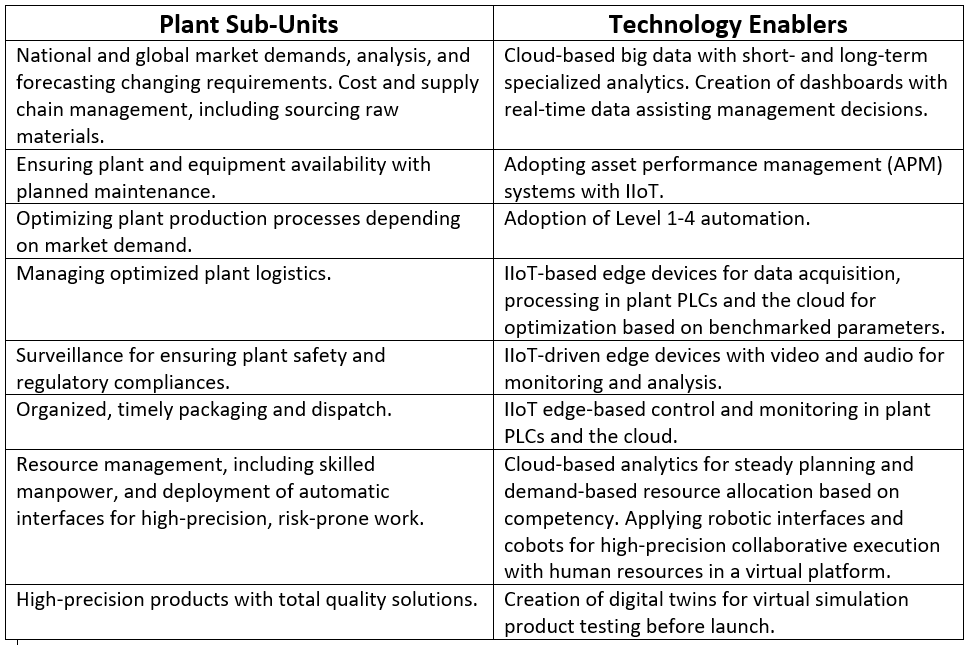Industries are currently facing unprecedented challenges. While some have multiplied growth, others have had a bumpy road. It has become very important to understand and adopt to sustainability strategies while carrying out business, where Industry 4.0/5.0 analyses future challenges and roadmaps.
The primary theme for Industry 4.0/5.0 is connectivity, which is adopting the possibility and technology-based disruptive solutions to connect all the domains of operations, including logistics and end-users.
The secondary theme of Industry 4.0/5.0 is customization, which is the strategy to continuously change and adopt to fast-changing short-term and long-term requirements. Understanding the changing pattern of market demands and customizing plant production to quickly address these changing requirements, and establishing customized delivery solutions, is the key for a sustainable business.
The third theme of Industry 4.0/5.0 is visibility, which ensures digital databases capable of big, decision-making data with cloud computing and analytics. Thus, developing a strategy to continuously address the changing requirements established in connectivity paves a path for the adoption of digitization, digitalization, and digital transformation.
Further strategies address:
- Understanding business scenarios with constantly changing environments.
- Assessment of risk, mitigation measures, and backup plans.
- Data searches for similar applications and data analytics to evolve the business model.
- Business risks associated with Industry 4.0/5.0.
These challenges are addressed by creating an evolving way of working (WoW), considering the following approaches:
- Establishing a connected world through cyber-physical systems—connecting man, machine, information, and organizations—into an integrated, virtually-connected network.
- New technology-driven approaches, adapting to disruptive technologies for customizing products.
- Industrial Internet of Things (IIoT)-driven, total automation plants, logistics, and supply chain management.
- Man-machine collaborations: The use of collaborative robots (Cobots) to enable better precision, faster execution, personification of products, and a minimization of waste.
- Enabling a connected process between plants, supply chains, original equipment manufacturers (OEMs), customers, and stakeholders to ensure quality, availability of production, feedback, and customization of products to ensure a continuity of process.
- System requirements to ensure an error-free cyber-physical platform, with strong and continuously upgraded security standards.
To carry out these challenges under a continuously changing environment, both domestically and internationally, the adoption of technology-driven solutions based on Industry 4.0/5.0 guidelines and IIoT-enabled architecture is key. This opportunity packages various technologies together, like the Internet of Things (IoT); edge devices; wireless communications; utilization of cloud storage for big data and cloud computing; and integrating data analytics that will open up new ways of carrying out business.
Connectivity is aimed towards integrating entire business portfolios: Connecting customers, their socioeconomic models, supply and demand chain management, supply chain logistics, plant process optimization, and best utilization with equipment predictive maintenance management.
Examples of the adoption of technology as enablers and a merger towards digital transformation is shown in the table below. Industry operations can be split up between various sub-units, each of them with a direct and indirect impact on the overall operation, which necessitates creating a workflow. This establishes connectivity in a digital platform with the adoption of technology-driven approaches that act as enablers.
It is evident that for sustainable business, digital transformation is a necessity, not a choice. Technology adoption and a merging towards digital transformation with all phases of business will connect stakeholders with a digitalized platform that will predict future business opportunities and create a competitive advantage in the future.





